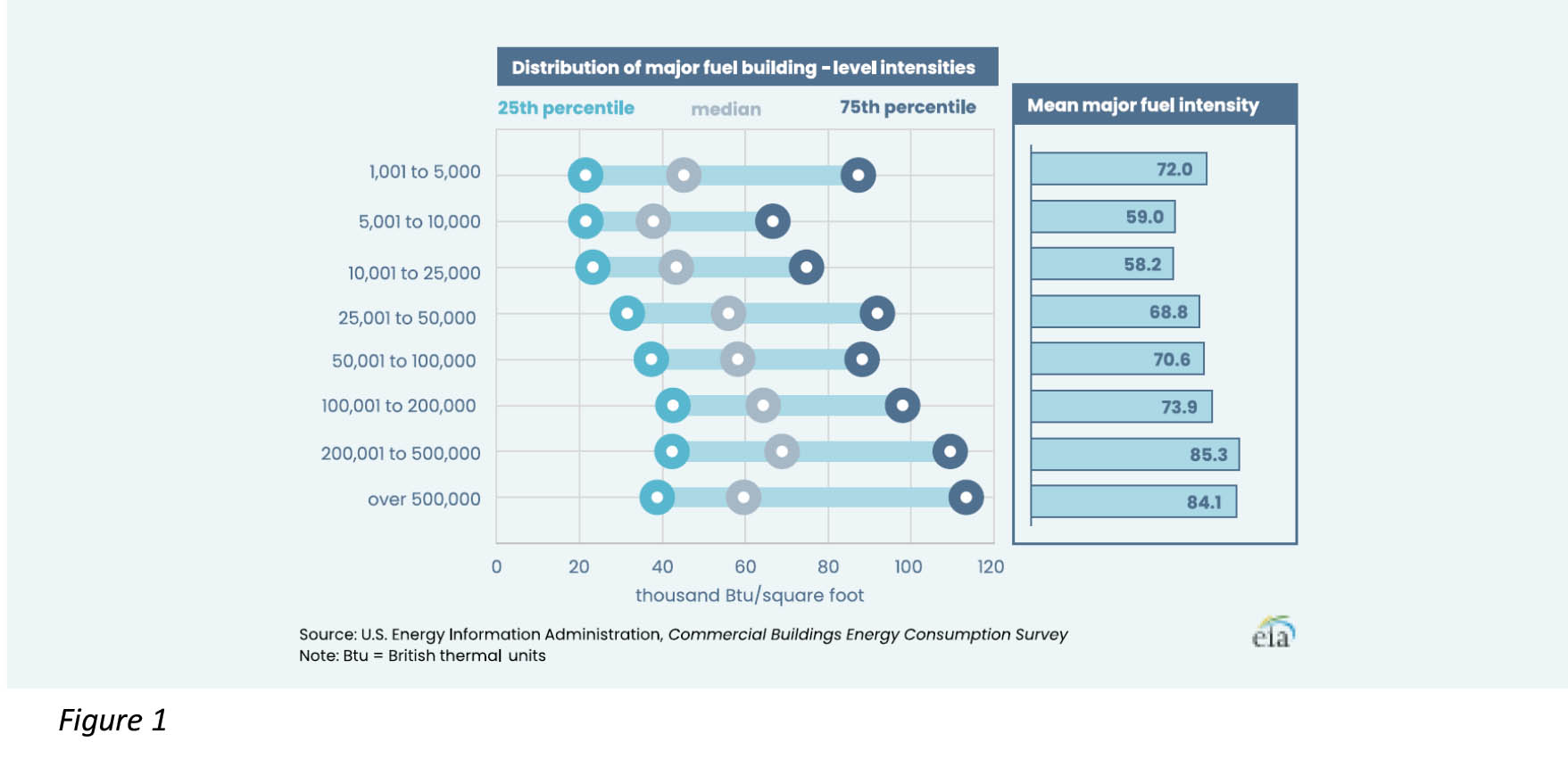— By Mark Danzenbaker —
Smarter retail facilities for lower energy costs.
Decarbonization. Net zero. ESG. These terms, as part of corporate sustainability efforts, have garnered incredible momentum over the last year. With major climate policy and legislation, a renewed focus on the clean energy transition, growing concern for an overloaded power grid and aggressive goals to reduce environmental impact, one thing is for sure: climate impacts and sustainability are top of mind for every industry.

Mark Danzenbaker, GridPoint
For retail and restaurant facility owners and operators, the negative effects of climate change are clear and present. An unreliable grid can mean unexpected power outages that lead to reduced business hours, lost perishables or uncomfortably hot (or cold) guests; new climate policies with energy and building code requirements that translate into additional costs; environmentally conscious shoppers choosing to take their business to greener establishments; and employees that are increasingly interested in their employers being sustainably aware and active. Beyond climate-focused pressures, commercial buildings are also facing rising energy costs.
Since 2012, commercial electricity costs have been increasing and recently saw a drastic 18% increase from 10.6 cents per kWh in 2020 to 12.55 cents per kWh in 2022. With mass electrification trends and oncoming demand from electric vehicles leading to unpredictable energy consumption patterns, this trend is likely to continue. It’s important to note that historically, energy efficiency programs have either focused on the residential sector (through smart thermostats) or in larger industrial or manufacturing buildings (with heavy controls systems), creating a major gap in programs for small- to medium-sized commercial buildings. According to the U.S. Energy Information Administration (EIA), 90% of the over 5.9 million commercial buildings across the U.S. have a footprint under 50,000 square feet. This leaves about 5.3 million similarly sized, potentially inefficient commercial buildings without energy efficiency programming.
Commercial Buildings and Energy Waste
EIA reports retailers use on average about 350,000 (kWh) of electricity per site each year. For an average 21,000-square-foot retail building, that’s the equivalent of 333,798 pounds of CO2e or over 17,000 gallons of gasoline consumed. The smallest buildings (1,001 to 5,000 square feet) had a significantly higher mean energy intensity than buildings between 5,001 and 25,000 square feet, which speaks to smaller businesses such as restaurants and mom-and-pops. Buildings 25,000 to 50,000 square feet show a mean that’s on par with buildings twice that size, indicating incredible energy waste. (See Figure 1.)

In fact, commercial buildings use approximately 35% of total electricity consumed nationally, and the U.S. Environmental Protection Agency estimates 30% of the energy used in commercial buildings is wasted. This can be further broken down by end-use electrical consumption, which defines energy usage by asset. (See Figure 2.)

With HVAC, lighting and refrigeration representing a significant portion of fixed costs for retail and restaurant facility owners and operators, it’s important to track energy consumption in real time. Not only does this identify inefficiencies as they happen, but it also provides decision-makers with data-backed strategies to maximize savings.
The Case for Coordinated Systems
Existing buildings were designed to be static, but operations have evolved in today’s connected world, and the need to adapt to outside forces has never been greater. Building operations must adjust to extreme weather, peak energy demand, maintenance requirements and other needs to maintain a suitable environment for those within. Smart buildings that incorporate an energy management system (EMS) enable facility managers to make informed decisions about comfort, quality, energy efficiency and sustainability.
While temperature is a large component of employee and customer comfort, simply changing the thermostat is not always the best path forward and could significantly raise building energy costs. An EMS is a group of hardware components that work together to monitor and control a building’s energy use. It typically includes sensors that monitor real-time data from key assets within a building, such as lighting, ventilation and heating/cooling equipment, which then process the data through software algorithms to control energy usage and generate alerts if any issues arise.
An upgrade to a single component or isolated system can result in energy savings of 5% to 15%, but a smart building with integrated systems can realize over 30% savings in existing buildings that are otherwise inefficient. By digitizing commercial building operations, facility managers can improve control and transparency in building performance and even profitability.
A Whole Building Approach
The stakes (environmental and financial) are too high to continue operating inefficient buildings. Facility owners and operators should consider an operational strategy that covers the entire building or set of buildings, and an EMS can greatly strengthen sustainability efforts while saving big on energy costs. Here are three ways an EMS can help retail and restaurant facilities:
- Reduce energy costs immediately. Automating the temperature and lighting schedule is one of the easiest ways to maintain an efficient building without sacrificing comfort. By programming these to business hours and occupancy levels, you can eliminate wasted energy consumption for a stronger bottom line.
- Be smarter about building management. With an EMS in place, data collection and analysis are automatically done in real time. This is essential for a proactive approach, as visibility into HVAC performance helps reduce maintenance costs and can proactively identify and diagnose malfunctioning units before costly issues occur.
- Drive a more sustainable future. Smart building technology creates opportunities for customized sustainability programs supported by your utility partner. Turning your buildings into resources for the grid unlocks new revenue streams for your business through demand management while strengthening grid stability.
Energy Savings from Day One
Historically overlooked on the sustainability front, commercial retail and restaurant businesses no longer have to accept aging systems and rising energy costs. It starts with smarter technology. Reducing energy use in commercial buildings can flip the script, turning wasteful facilities into resources for the grid. Not only can this have an enormous positive impact on sustainability goals and energy security, but it can also save money on energy costs that can be applied to other business needs. And the best part is, businesses can see the benefits immediately.
— Mark Danzenbaker is the CEO of GridPoint, a leader in building energy management and optimization technology that decarbonizes commercial buildings and accelerates a more sustainable energy future. Danzenbaker joined GridPoint in 2009 and has served in several leadership positions, including senior vice president of sales, marketing and product management, before being named CEO in 2016. Prior to GridPoint, Danzenbaker spent a decade with Accenture.

